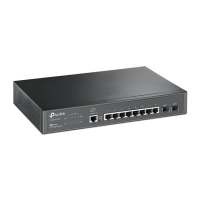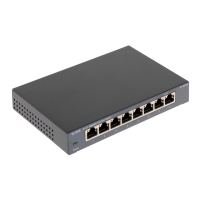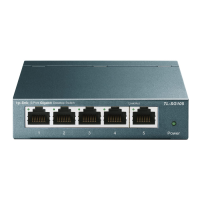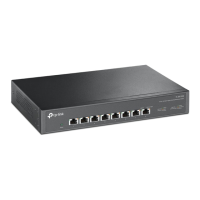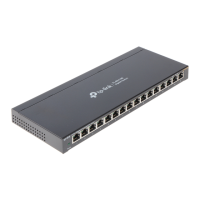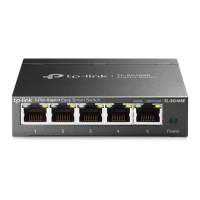47
The LAG function is implemented on the LAG Table, Static LAG and LACP Config configuration
pages.
5.2.1 LAG Table
On this page, you can view the information of the current LAG of the switch.
Choose the menu Switching→LAG→LAG Table to load the following page.
Figure 5-8 LAG Table
The following entries are displayed on this screen:
: Select the applied scope of Aggregate Arithmetic, which
results in choosing a port to transfer the packets.
• SRC MAC: When this op
tion is selected, the Aggregate
Arithmetic will apply to the source MAC addresses of the
When this option is selected, the Aggregate
Arithmetic will apply to the destination MAC addresses of
the packets.
• SRC MAC + DST MAC: When this optio
n is selected, the
Aggregate Arithmetic will apply to the source and
destination MAC addresses of the packets.
• SRC IP:
When this option is selected, the Aggregate
Arithmetic will apply to the source IP addresses of the
packets.
• DST IP: When this option is
selected, the Aggregate
Arithmetic will apply to the destination IP addresses of
the packets.
• SRC IP + DST IP:
When this option is selected, the
Aggregate Arithmetic will apply to the source and
destination IP addresses of the packets.
: Select the desired LAG. It is multi-optional.
: Displays the LAG number here.
: Displays the description of LAG.
: Displays the LAG member.

